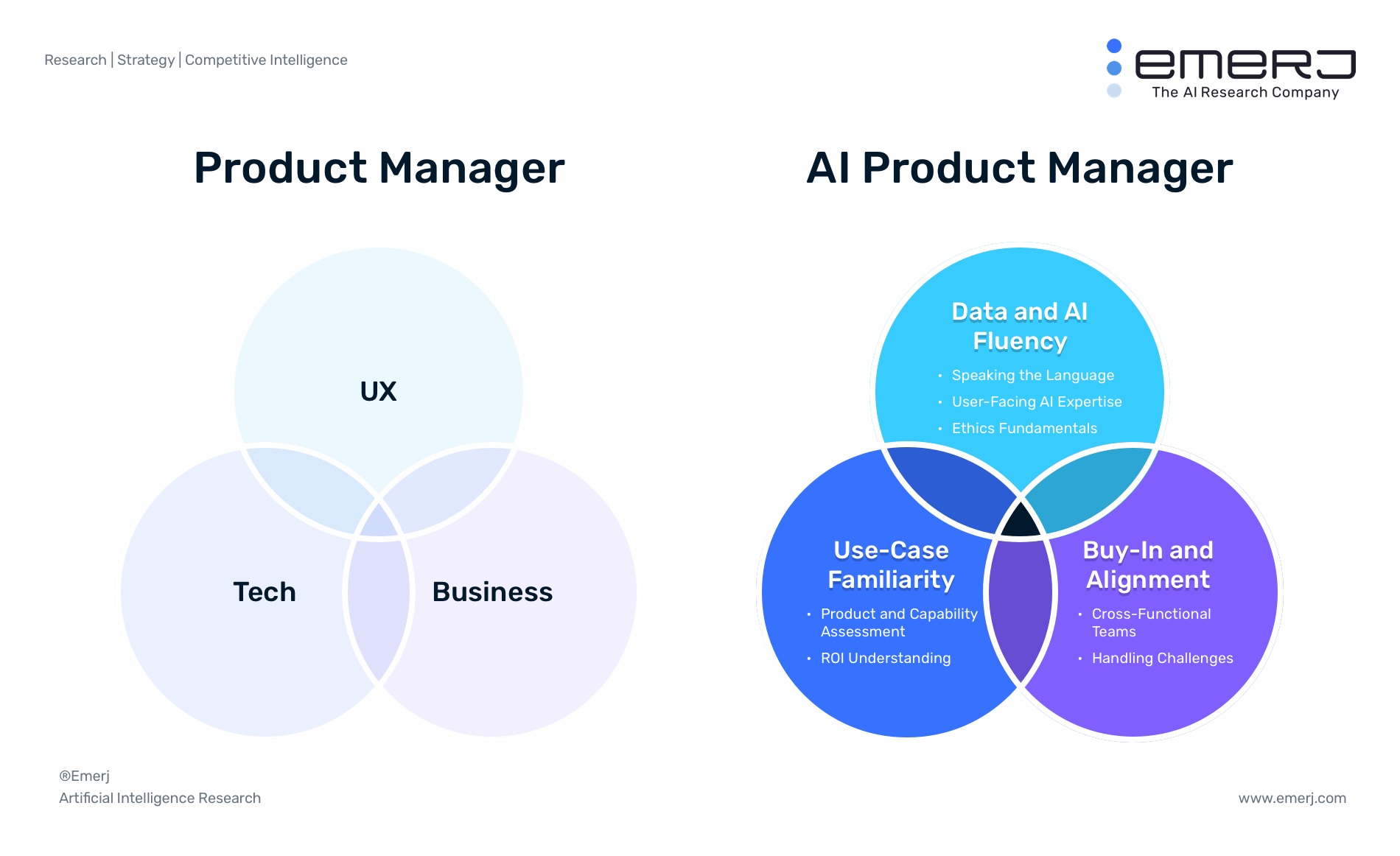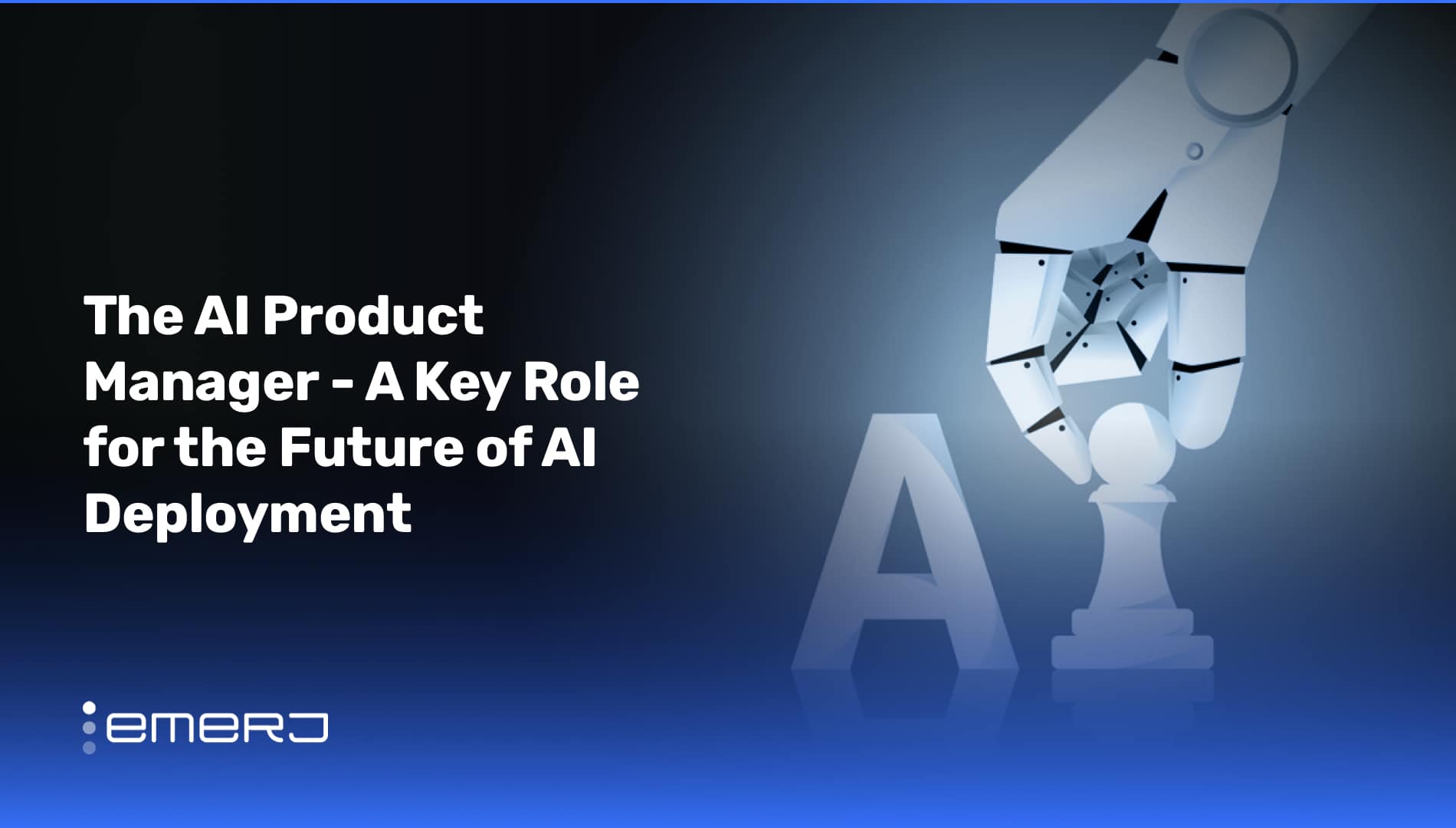In the 1990’s, Ben Horrowitz described a product manager as follows:
That definition isn’t always a perfect fit, but it can be a good way of summarizing the responsibilities of a product manager; they are wholly in charge of bringing an in-house product from inception to generating an ROI.
It follows that AI product managers are in charge of bringing AI products to life in the enterprise, but their responsibilities differ from the product managers of standard IT products. AI product managers require a very unique skill set to bring their products to life.
It is unlikely that companies are going to be hiring people for AI product manager roles outright; there simply aren’t enough people in the world with experience managing AI projects in the enterprise.
Instead, many existing product managers at large companies will find themselves in charge of AI products in the new decade. Unfortunately, they won’t have the foundation necessary to deliver an ROI. Their projects are in many cases doomed to get shut down by leadership or fail to deliver on promises.
This article can help prevent that from happening.
At Emerj, the AI Research and Advisory Company, we work with enterprise leaders, including product managers, to develop strategies for successfully building and deploying an AI product and generating an ROI from it. This article explores some of the details of these strategies as they pertain to the crucial role of the AI product manager.
The graphic below is a Venn diagram featuring the three key areas of competence of a product manager as defined by Atlassian. On the right-hand side are the skill sets pertinent to the AI product manager.

Throughout this article, we explore Data and AI Fluency, Use-Case Familiarity, and Buy-In and Alignment in greater detail as the skills that we believe to be critical for deploying AI products successfully.
Data and AI Fluency
Speaking the Language
AI product managers have to be able to understand the fundamental terminology and the fundamental concepts of artificial intelligence. This doesn’t mean they need to learn how to code, nor does it mean they need to talk shop with their IT department. AI product managers don’t need to be data scientists; they have to be managers and leaders. At a conceptual level, they need to know:
- How a machine learning algorithm is trained
- How feature engineering works
- What kinds of AI approaches and techniques are out there (predictive analytics, machine vision, natural language processing)
- Where these approaches and techniques can be applied in their industry
- The lifecycle and phases of an AI project, including business understanding, data understanding, and assessing project needs
A conceptual understanding of the lifecycle of AI and data science is one of the skills product managers are most likely to be missing. They go into AI projects as if AI is like regular IT, and they fail to prepare for the constant loops of iteration required to bring an AI project to life.
If they do understand this, it’s more than likely that the C-level executives they report to do not. Aligning leadership with reasonable expectations for an AI project is a separate skill discussed later in this article.
In addition, it’s critical for AI product managers to understand that AI-related products require an incubation period during which one can test and understand how well their trained algorithm actually performs in the use-case.
AI product managers often have to make sure that they can develop or they can perform that incubation period in a way that does not disrupt the user’s experience in a way that is detrimental.
AI product managers also need to understand the challenges that come with adopting artificial intelligence in the enterprise, such as:
- It can be extremely difficult to predict the ROI of AI projects
- It can take months to access and clean the data necessary to begin an AI project
- In some cases, there will be core business structures that need to be overhauled, including data infrastructure, IT infrastructure, and team-building protocols. All of thee ar subject to change in the middle of the project.
If any of these challenges are a big surprise to an AI product manager, they’re going to do a very poor job of communicating realistic expectations with leadership, and they’re going to do a very poor job of managing the various team members part of the project.
We’ve written a three-part series on the challenges of adopting AI in the enterprise called the Pitfalls to AI Adoption, which one can read here.
Use-Case Familiarity
Product and Capability Assessment
An AI product manager can’t do their job unless they very thoroughly understand a realistic landscape of AI capabilities within their industry. At Emerj, we provide clients with data and advisory on the existing high ROI use-cases of AI in their industries through our AI Opportunity Landscape service. AI product managers can use AI Opportunity Landscapes to understand if what they’re building or buying is realistic and potentially accessible to the company.
Many internal projects and vendor promises are actually unrealistic, and it’s the product manager who should be able to understand the expectations of a product because they’re the ones organizing and orchestrating the efforts to build it.
Understanding ROI
Secondly, use-case familiarity is important for the sake of understanding potential ROI. Companies need to be able to ask questions like:
- Is the result that we are aiming for actually obtainable?
- What have been the reasonable results of other companies like ours that have implemented applications of this kind?
Sometimes an application is really a first of its kind, and there won’t be a precedent. But in most cases, there exists an analogous AI application that will give a company reasonable ROI expectations.
Having a grounded understanding of existing use cases and existing results at other companies can help AI product managers make sure that they set ROI expectations properly. In doing so, they could hedge against leadership shutting projets down early when they don’t appear to be generating the kind of unrealistic ROI they may be expecting.
Whether it’s driving revenue, driving efficiencies, or reducing risk, an AI product manager should be able to set reasonable expectations for the product. They need to be able to stand up for a realistic expectation of ROI and be able to set objectives for their teams that will allow them to meet that ROI.
They can’t do that without understanding the use-cases and the existing evidence of ROI within their industry and for similar applications.
Buy-in And Alignment with Leadership
Cross-Functional Teams
AI product managers need alignment with leadership on a variety of considerations. One of these is cross-functional AI teams. Cros-functional AI teams are coalitions of data scientists, IT personnel, subject-matter experts, and managers.
AI product managers are responsible for getting all of these kinds of employees in the same room and discussing the same product. This isn’t easy.
If the company doesn’t already employ data scientists, they will need to work with hiring managers to procure talent; if it does, data scientists will likely be the easiest group to get on board with a months-long AI project. That will be why they were hired. Not the case for other kinds of employees.
For example, an AI product manager may be tasked with building an AI-enabled fraud detection system at a bank. In order to do this, the AI product manager will need to get fraud specialists to agree to stop doing their regular work and instead spend weeks working with the team to build the product.
Many fraud specialists, in this case, subject-matter experts, aren’t going to want to do this, and the bank’s leadership may be uncomfortable taking from resources they need to ensure their banks are in compliance with regulations.
Some subject-matter experts, such as sales representatives, will be disincentivized to work on cross-functional AI teams because they would rather earn commissions for doing their regular work. AI product managers will need to work with the leaders at the subject-matter experts’ department to figure out how to best incentivize them to work on an AI team.
The job of the AI product manager is to orchestrate the different team members to work together along the process of collecting data, training the algorithm, assessing results, and realistically calibrating, iterating, and moving forward on how different team members contribute throughout the AI deployment life cycle.
AI product managers that want to learn more about creating cross-functional AI teams and bringing AI projects to life can get our AI Deployment Roadmap report.
One of the most important parts of managing cross-functional teams is being able to educate leadership. AI fluency and an understanding of use cases are not only critical for the AI product manager’s own knowledge; they are critical in getting AI product managers and leadership on the same page.
If leadership is caught off guard when presented with realistic expectations of time to value and what might be possible with the AI product, then they are likely to end the project early. This is especially the case if they are not primed on the challenges and hurdles that the AI team will inevitably face over the course of building an AI product. Many proof of concepts and initial AI product ideas fail for this exact reason.
In the next section, we discuss some of these challenges.
Handling Challenges
Company leaders need to understand the challenges that the AI team is going to run up against when building an AI product. This is because oftentimes the person who is signing off on supplying funds and resources to the team is not the AI product manager; as such, that person needs to be primed on goals that are realistic for the product.
AI projects are high risk. Determining ROI is going to be much more challenging than it is for traditional IT projects. So will determining the work that a company needs to do upfront to be able to even test their hypothesis in terms of collecting data, harmonizing data, and getting perspectives from different team members. Some of this work is also unpredictable.
The nature of artificial intelligence is that sometimes the data that one has and the goal that one has simply don’t line up, even if it seems like they should.
There is a lot of inherent uncertainty in artificial intelligence projects. If that communication isn’t clear, and if those realistic challenges aren’t understood at the beginning, then those hurdles and roadblocks are likely to take leadership by surprise and get them to end a project early.
AI product managers need the authority to sometimes redefine the business goal. They need the authority to pool ideas from subject-matter experts, IT personnel, data scientists, and managers and then to relay both the challenges they face to leadership and their opinion on which expectations they need to change.
They need to have the trust of leadership to alter business goals and expectations potentially many times over the course of a project.
AI product managers cannot expect to describe the project to leadership once and then go off and finish it with their team. Many unforeseen hurdles will come up, and they need to have the ability to frequently communicate with leadership in order to overcome these hurdles.
They need to have the level of trust from leadership to be able to push back against expectations, push back against what they believe the capabilities of the product are, and push back against what leadership expects the ROI to be.
Emerj for AI Product Managers
AI Product Managers that want to champion high ROI AI projects that can drive real value at their companies first need to find out where AI is already delivering value in their industry. They use the Emerj AI Opportunity Landscape to gain a clear, data-backed view of the AI ROI landscape.
AI Opportunity Landscapes provide product managers with the data and decision support tools they need to increase the success rate of the AI projects they’re in charge of, allowing them to spearhead real change at their companies that has the potential to win significant market share.





















